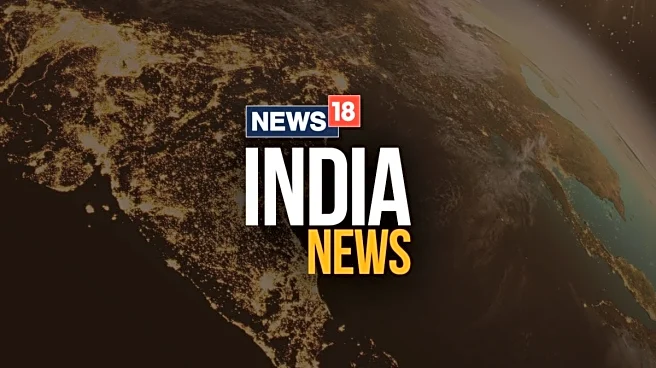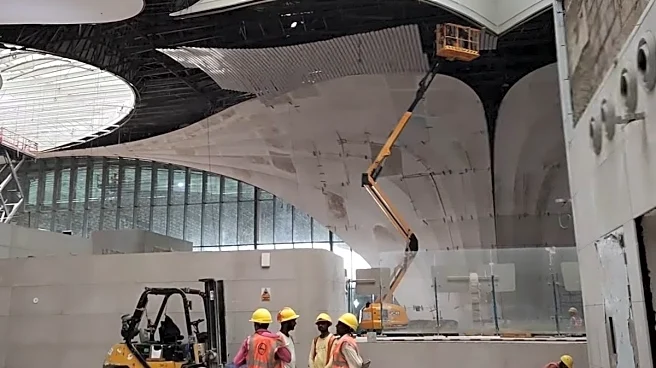“Banks were primarily in corporate lending, working capital, corporate loans and also infrastructure credit,” Kamath told CNBC-TV18’s Ritu Singh in a free-wheeling conversation on the sidelines of the Global Fintech Fest 2025 in Mumbai. “More than fifty percent of the book was corporate. The other side was retail. That has flipped, particularly post-COVID, and flipped very hard.”
For Kamath, this reversal has left India’s banks “missing out on opportunities in an economy which is growing around seven percent.” The irony, he suggested, was that even as India’s corporate sector became the driver of economic expansion, banks drifted toward consumer credit and personal loans.
The RBI’s latest reforms, allowing acquisition financing and easing certain lending norms, may change that. “This opens up equal opportunity,” he said. “To me, it is excellent.”
A Regulator in Motion
Not everyone agrees that the RBI’s new openness signals progress. Some analysts have been worried about about a softening of prudential standards.
Kamath, who has seen the financial system evolve over five decades, rejects that entirely. “In my fifty-five years in business, I have not seen the RBI not taking it seriously- never, ever,” he said firmly. “From 1996 onwards, when I could take a better look, regulation has always followed what is possible, given the context.”
He sees the regulator as evolutionary, adjusting to the country’s economic trajectory. “Every five years,” he observed, “the RBI has seen an evolution in how it looks at what it needs to do. They act in the context of the overall economy and policy construct. What they have done now is appropriate, considering where we are.”
Reclaiming the Corporate Credit Space Perhaps the most telling change, in Kamath’s view, is the RBI’s decision to allow banks to finance mergers and acquisitions, a move that reopens a once-taboo corner of corporate finance.
The prohibition, he explained, came from a very different era. “There was a period of time when acquisition of one company by another was typically hostile,” he recalled. “The view then was that banks should not be an instrument in that. That was long back. Now, everything is market-driven, everything goes through the marketplace.”
The old rules, he implied, no longer apply. “Looking at the risks at that point in time, the way business was being done then, M&A financing was not allowed,” Kamath said. “Now, in a completely different context, the RBI has done the right thing to open it up, because it’s an excellent avenue of business for banks.”
Also Read: KV Kamath sees RBI evolving every five years on banking regulations
Deleveraged, But Hungry
If the system is now freer to lend, the question remains: is there enough demand? Kamath thinks so, but he’s careful to distinguish between types of credit.
“Deleveraging, I think, is now a mindset,” he said. “Large companies will not leverage themselves again.” But the next wave of borrowing, he suggested, won’t come from the over-extended giants of the past. “This is for business purpose and acquisition,” he noted. “And in most cases, these acquisitions are friendly, not hostile.”Global investors, he added, already see the opportunity.
“Every single global entity that I talk to, of whatever type- if they are in financial services- is looking at India as a great place to set up a private-credit business,” Kamath said. “The curiosity, the interest, the opportunity they see, to me, means that it is a very large number.”
Retail’s Moment - With a Cautionary Note On the consumer side, Kamath sees promise but also peril. Retail credit, he said, should grow in line with overall economic expansion. “At seven percent GDP growth,” he explained, “we should see credit growth of eleven to twelve percent without any fear.” The recent GST rate cuts, he argued, “elevate that sluggishness” that had crept into retail lending and “allow the customer to breathe better, buy what they aspired for.”
But his tone turned cautionary. “On the retail side, there is need for caution in a whole range of products, particularly unsecured products,” he warned. “Unsecured products which are consumption spends that cannot be serviced are dangerous. I am not saying it is visible, but it is dangerous.”
The RBI’s increase in risk weights on such credit, he believes, was timely. “NPAs are at levels I have not seen in my career,” he said, but warned that “high NIMs mean either greed or provisioning. We need to see what is really driving it.”The Technological Reckoning Beyond regulation and credit cycles, Kamath sees a deeper structural challenge for banks: the limits of their legacy technology.“Traditional banking models will evolve,” he said. “What needs overhaul are the technology platforms that the entire financial system is using. These are all legacies- in most cases, core platforms in India are thirty to forty years old.”
By contrast, he said, “modern players who came up in the last four or five years use modern architecture. This competition is unequal.” The incumbents, he suggested, “need to ask: how do I get to the current state? If they traverse it, there is no competition. They are the big boys. They have the muscle.”But he worries banks are missing the point. “They are investing much more than they ought to, but in things which will not take them anywhere,” he said bluntly. “What we need is to make a complete break from legacies and move to platforms which are correct.”
A Long Transformation, Irreversible For Kamath, the conversation inevitably returns to India’s broader growth arc. “Transformation journeys are long,” he reflected. “Once it starts, it’s very difficult to throw a spanner in the works.”
He draws parallels with Japan and China’s economic evolutions and sees India now at a similar inflection point. “As we go on this journey,” he predicted, “inflation will no longer be an issue, and interest rates will come down. Currency will start strengthening.”The path, he said, is clear. “We are on a path of an unfinished agenda, and we are fulfilling it,” Kamath concluded.
“Infrastructure is sixty to seventy-five percent incomplete. Urban rejuvenation, airports, roads, railways- these all are in progress. Aspirations rise, per-capita incomes rise, and domestic consumption grows. The funding mix is changing, and the growth engine keeps going.”
In Kamath’s world view, India’s financial system is not just evolving- it is finding its rhythm. The rules have shifted, the mindset has matured, and the machinery is beginning to hum again. The long transformation, as he puts it, “has begun and it will not be stopped.”

/images/ppid_59c68470-image-175993002900365728.webp)
/images/ppid_59c68470-image-17599976217413800.webp)
/images/ppid_59c68470-image-17599875348413980.webp)


/images/ppid_59c68470-image-17600025330122435.webp)



/images/ppid_59c68470-image-175991503070685941.webp)
